9314 A PAIR OF PORCELAIN AND GILT-BRONZE MOUNTED CASSOLETTES ATTRIBUTED TO MATTHEW BOULTON English. Circa 1795. Measurements: Height: 7 3/4″(19.5 cm) Width: 3 1/2″ (9 cm) Depth: 2 1/4″ (6 cm)
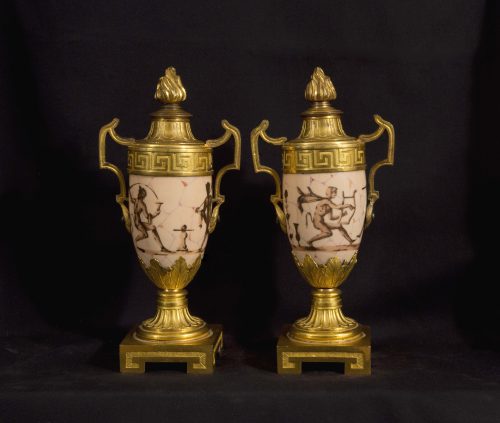
Research
Of porcelain and gilt bronze. Each with gilt bronze finial en flambeau reversing to a circular nozzle with guilloche decoration, the lids above a frieze with greek key pattern, the body of porcelain decorated after the antique with satyrs against a rose ground painted with faux craquelure, set to either side with shaped handles, the body with stiff leaf decoration at the base above a moulded collar and a spreading fluted socle set on a square plinth.
The present pair of cassolettes are closely comparable to the work of the celebrated English metal-worker Matthew Boulton (1728-1809). The quality of the gilt bronze mounts of the cassolettes suggests that they are the work of a craftsman of the highest calibre, whilst the form of the design and the motifs employed in their execution are shared by a number of pieces known to have been made by Boulton.
The design of the cassolettes is strongly characteristic of pieces made by Matthew Boulton, combining the ornamental effect of these highly decorative objects with the utility of the candle-holder lid.1 Boulton pioneered the attachment of gilt bronze mounts to vases in English design, an innovation inspired by the experiments being undertaken by French metal-workers.2 The inspiration for making vases serve as candelabra, perfume-burners and clock-case Boulton acquired from France, in a number of Boulton pieces, like the present cassolettes, the form of a vase is set with gilt bronze mounts terminating in a finialled top which inverted assumes the form of a candle holder.3 Designs, such as those of circa 1755-6 by the architect and engraver Jean Francois Neufforge (figure 1), illustrate the close relationship between Boulton’s work and that of his French contemporaries.4
Two pairs of vases dating from the early 1770s, formerly in the collections of Howard (Antiques) Ltd (figure 2) and Trevor Antiques (figure 3), illustrate the closeness of the comparison with Boulton’s work.5 Both these pairs of cassolettes have rectangular bases of gilt bronze supporting a socle which joins to the vase by means of gilt bronze mounts in the form of leaves interspersed with berries in a form closely comparable to those in the present pieces. Those pairs of cassolettes also terminate in gilt bronze lids which taper elegantly upwards towards the resolution of a finial, inverted these lids form candle holders as in the present pieces, a design strongly characteristic of Boulton’s work. In other pieces by Boulton, such as a second pair of vases formerly in the collection of Howard (Antiques) Ltd, the finial to the top assumes the en flambeau form found in the present examples.6
The pair of vases formerly in the collection of Trevor Antiques also features a border with guilloche decoration, a motif used repeatedly by Boulton in many of his finest pieces and which in the present cassolettes appears in an inventive extended form on the candle-holder side of the lids. Another characteristic of Boulton’s decoration, the Greek key border, also appears in the present cassolettes as the frieze around the neck of the vase. Two pairs of Cassolettes by Boulton formerly in the collection of H. Blairman and Sons make use of such a Greek key decoration in the frieze surmounting the base.7
The fluting to the socle of the base in also a feature of Boulton’s work, often appearing in a twisted form to spreading bases or lids. On a number of vases carrying candelabra arms, including a pair supplied to Robert Child in 1772 and part of the collection at Osterley Park, Middlesex8, the socles to the base carry scooped fluting in a form related to that of the present pieces.
Boulton had drawn for inspiration on the work of his French contemporaries, and though he refined the extravagance of those designs it is possible, as Boulton’s leading historian Nicholas Goodison has observed, “to detect in several of his individual decorative motifs the inspiration of French models, and especially some of the mounts made by French metalworkers in the relatively archaic style that was typical of the early years of the classical revival.”9
The arms to the present cassolettes seem particularly to be conceived in the manner of such French pieces. A number of French vases set with gilt bronze mounts are set to either side with arms conceived in variations of geometric forms. One such piece is a vase with candelabra arms which features handles set to either side of the vase essentially geometric in form but beginning and ending in scrolls. That piece can be further related to the present cassolettes by the Greek key design to the square feet of the base.10
A closely comparable base can also be found on a table clock by Julien Le Roy, with a case attributed to the famous master metalworker Phipippe Caffieri of circa 1757.11 As in the present cassolettes the base is raised on square feet decorated with a Greek key design, though in the table clock it takes the form of an incised line.
A second piece by Caffieri, a stand of 1761, illustrates the way that Boulton drew on French motifs but gave them a simplified form.12 That stand features a decorative band of repeating rectangular panels arched to either end, which is closely related to those to the neck of the tops of the cassolettes. The elongated guilloche decoration found on the neck of the candle holder of the cassolettes is also found in the Caffieri stand, though in that piece it takes a far more elaborated form filled with foliate decoration.
The present cassolettes are further marked as pieces of great refinement by their manufacture in porcelain. The fragility of the material meant that the application of mounts and handles required an extreme degree of care and sophistication on the part of the craftsmen responsible.13 Vases made from china are frequently referred to in the account books of the Boulton workshops but more often they made use of more easily worked materials. In this case the porcelain probably originated in Shropshire or a Staffordshire factory, where it was made specifically to fit the mounts, before being taken to London to be decorated.
Boulton’s use of the vase form was itself part of the wider antique revival which profoundly influenced the development of the decorative arts in the second part of the eighteenth century. Vases were central to this revival, and enthusiasm for this form reached the level of a mania towards the end of the century. This craze was given considerable impetus by Pierre François d’Hancarville’s publication of the Catalogue of the Collection of Etruscan, Greek and Roman antiquities from the cabinet of the Hon. William Hamilton, four volumes featuring Hamilton’s collection of ancient vases, to which Boulton himself subscribed.14
Footnotes:
1 Nicholas Goodison, Ormolu: The Work of Matthew Boulton, London:Phaidon Press (1974), p. 25.
2 ibid., 24.
3 ibid., 48.
4 Svend Eriksen, Early Neo-classicism in France, London: Faber and Faber (1974), figure 312.
5 Goodison, op. cit., figures 114 and 115.
6 ibid., figure 124.
7 ibid., figures 112 and 113.
8 ibid., figure 126.
9 ibid., p. 48.
10 Eriksen, op. cit., figure 239.
11 Goodison, op. cit., figure 1.
12 Eriksen, op. cit., figure 236.
13 Goodison, op. cit., p. 29.
14 ibid., p. 27.
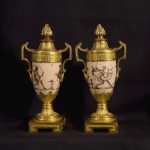
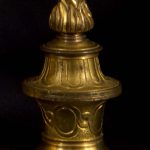

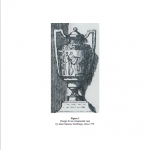
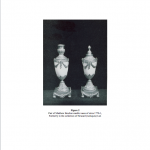
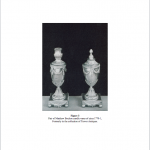
Comments are closed.